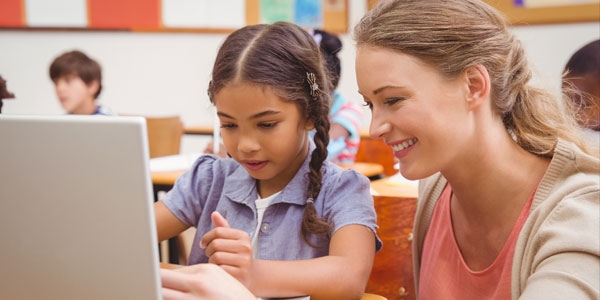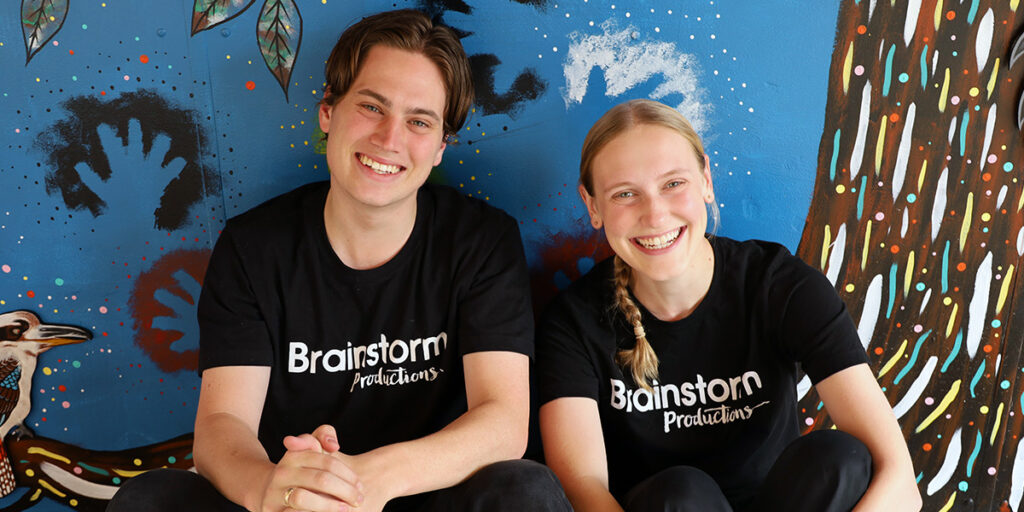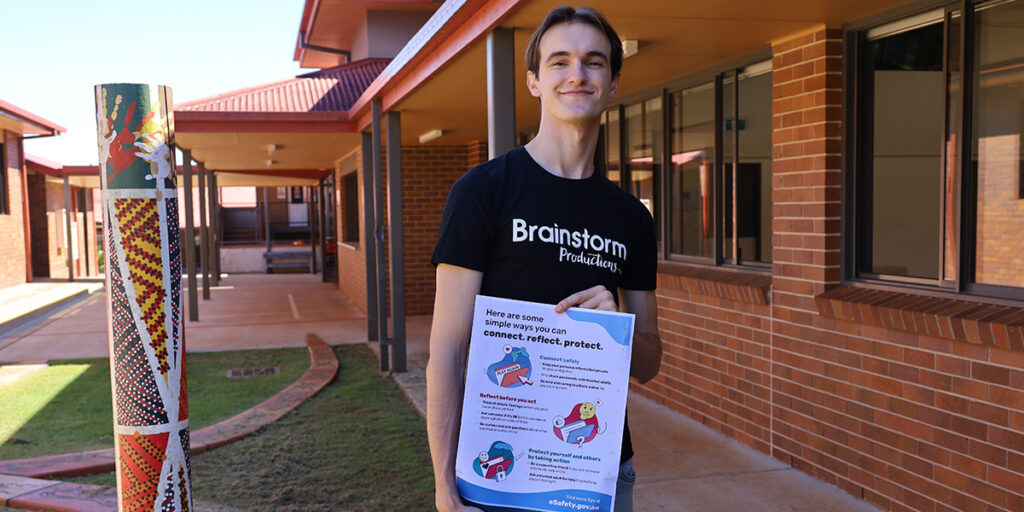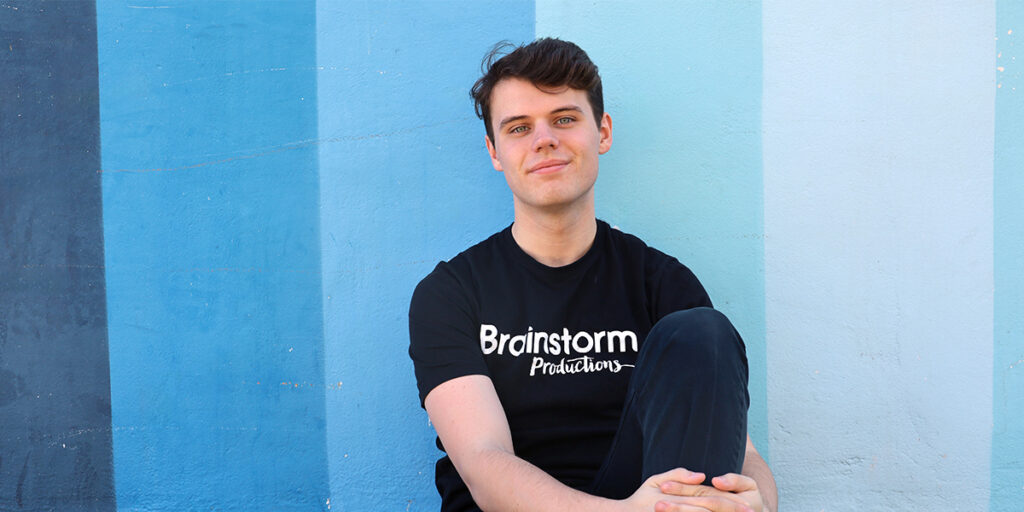This month, Brainstorm Productions were thrilled to be part of EduTECH Australia, an international conference and expo, which brings educational providers together to discuss, inspire and exchange ideas. Attendees at EduTECH shared the latest in digital technology, e-learning, robotics, and virtual realities for an education environment. There are exciting changes on the horizon, as the world of possibility opens up with ease of learning, access to new information and advance in IQ and skills.
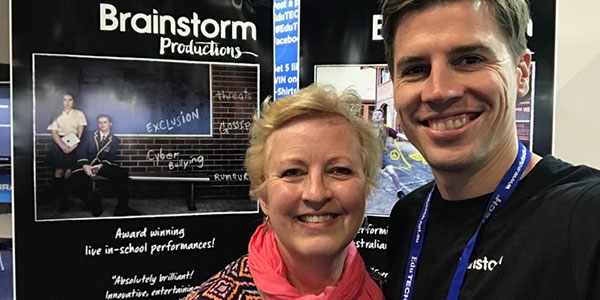
(Matthew from Brainstorm Productions with Kerry from St Paul’s Grammar at Edutech Australia 2017 Conference and Expo)
But as parents and educators, we also have an ethical obligation when handing over smartphones and other internet connected devices to young people. We need to provide digital citizenship for teenagers. Technology is not without its pitfalls. Fear of missing out (FOMO) means some children use social websites and apps almost 24/7. Teachers and parents need advice and cyber safety resources to ensure children are aware of the possible negative impacts.
Recent studies demonstrate that smartphones and the internet can affect young people’s sleep, mental health, safety and social skills. We need to understand the impact of technology, and have the skills and knowledge to guide young people to use devices safely.
Smartphones impact sleep
Children are getting significantly less sleep than they need and research puts this down to screen time. Students that are sleep deprived can be hyper sensitive or more irritable and aggressive, potentially making them the perpetrators or victims of cyber bullying or bullying at school. Lack of sleep can affect their decision making skills on and offline.
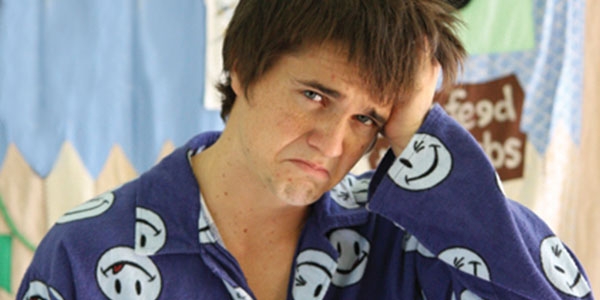
Studies have found that teenagers need eight to nine hours sleep a night to feel rested. But teenagers who have screen time for more than four hours a day are three-and-a-half times more likely to sleep less than five hours a night. Late bedtimes and the bright light from the device effects the circadian rhythm needed for natural, healthy sleep. Teens report headaches, tension and muscle aches, which can be caused by posture when using a device for extended periods. Phones and devices also cause psychological arousal, which makes it difficult for teens to relax before bed.
The dangers of virtual reality
The smartphone and the internet in general do more than affect our sleep. They create a whole new reality. When we use the smartphone, and in particular, the internet, we step into a virtual reality. For some children, this new reality can be more interesting than real life. It takes us anywhere, and connects us with anyone. It is becoming increasingly difficult to supervise children on devices so Cyber safety programs like Brainstorm Productions ‘Buddies’ and ‘The Protectors’ are essential to teach children how to stay safe online.
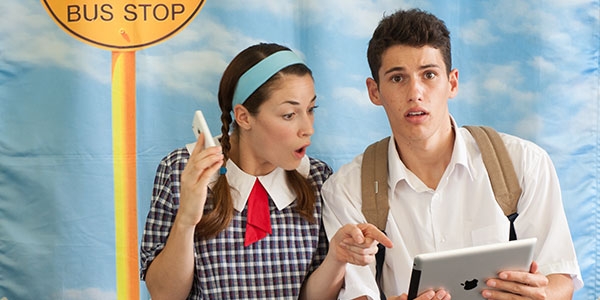
We have vast amounts of information at our fingertips, and the opportunity to step into almost any world, or any life we desire. Children can be exposed to inappropriate material and cyber bullying.
In their virtual lives, children have a certain control they may feel they don’t have in real life. They can stay anonymous, so there is a perception that their true identity is not impacted by their online behaviours. However it’s never really anonymous! Brainstorm Productions will launch a new show in 2018 ‘The Flipside’ to address online ethical behaviour and cyber safety.
This virtual world has a lot of appeal for young people so we need cyber safety programs, cyber safety resources and activities like Brainstorm’s ‘Cyberia’, ‘Verbal Combat’ and the ‘Flipside’ that are innovative and age appropriate.
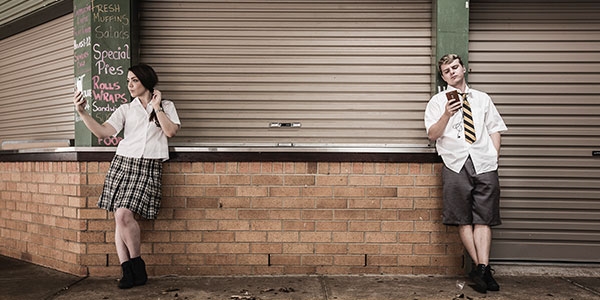
Although it feels like we control our reality in a virtual world, much of the time, the reality controls us.
New studies show that social media use impacts mental health of teenagers, particularly their self-esteem and well-being. Issues are associated with body image and cyberbullying. ‘Facebook depression’ is a term researchers use to describe this phenomenon.
Cyberbullying is when people are sent hurtful, nasty or threatening messages or photos through the internet. A person’s image or facts about a person might be shared with a large online community in a harmful way.
One of the dangers of cyberbullying is that it can be hard to track the source. It has a wide impact, as many people see the harmful comments and images. People experiencing cyberbullying may feel defenseless and disempowered, ashamed, guilty and unsafe. Teachers need to have access to internet safety programs and digital citizenship resources to help guide young people in the healthy use of technology, and protect them from associated harmful effects.
Moral obligation when handing over devices
As parents and educators, we need to know the facts and potential consequences of internet use. And we need to connect with internet safety resources and digital citizenship resources, so we can guide safe internet use.
Reach Out provides strategies to help a person who is being cyberbullied:
• Keep a record of bullying
• Report the bullying to eSafety Commissioner or Australian Human Rights Commission
• Avoid responding or engaging
• Talk to someone about the impacts
• Log out
General cyber safety tips include:
• Don’t share personal information
• Ensure privacy settings are correct and up to date.
Digital Citizenship provides more information for students, teachers and parents about being safe and responsible online.
We need to watch out for signs that a young person is being harassed online, such as withdrawal, or refusal to engage with normal activities. Signs of phone addiction include avoiding normal activities and social contact.
Stay open to children about their online world and encourage teenagers to talk to you about their concerns, and online behaviours. In this way, we can help guide young people through this new reality.

